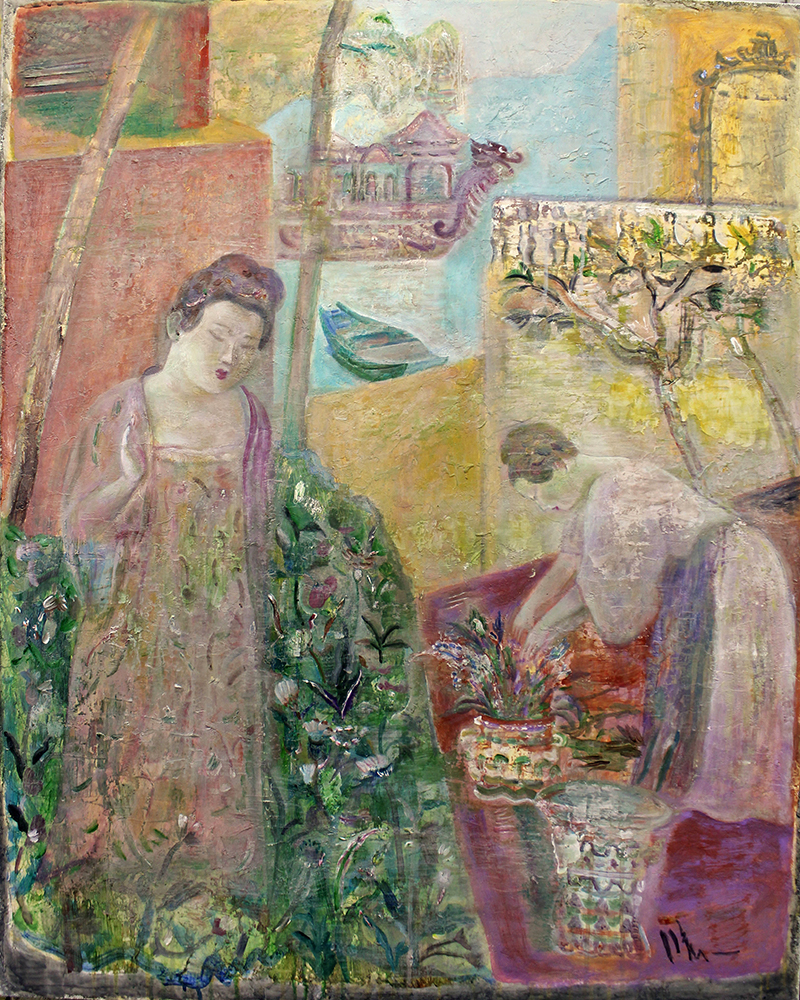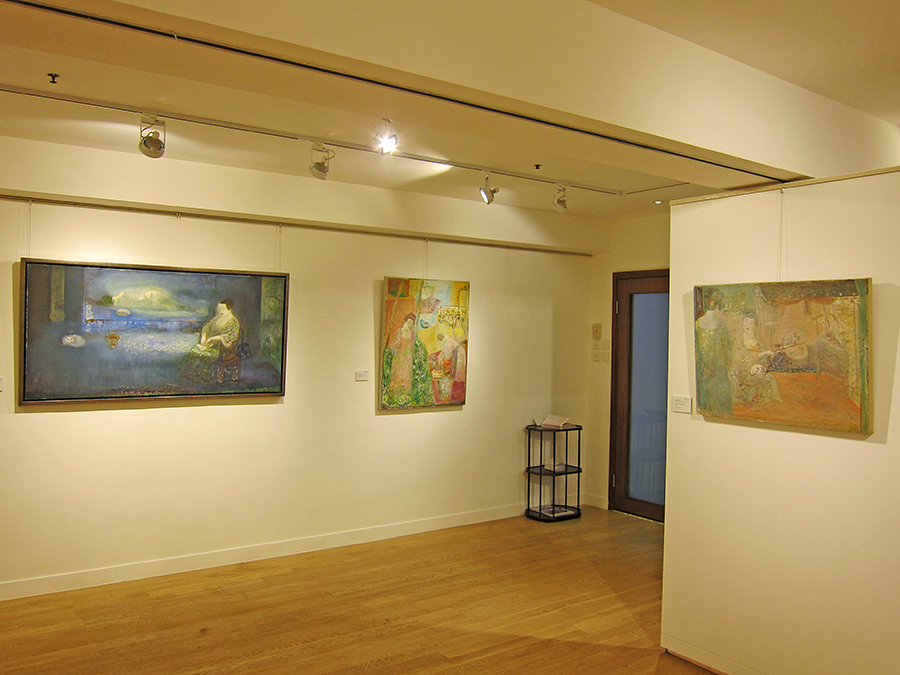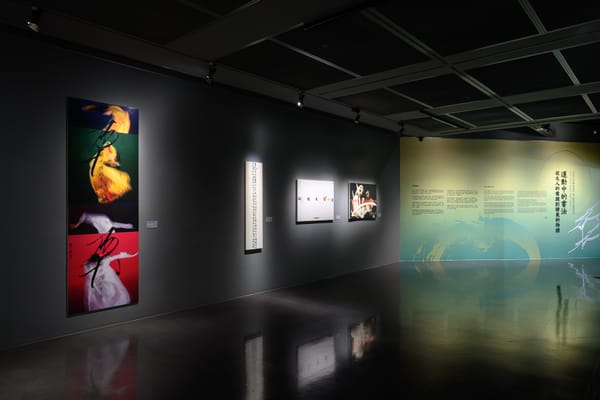Shows
Leng Hong's “As Last Night Twinkle Stars, As Last Night Blows The Breeze”


“As Last Night Twinkle Stars, As Last Night Blows the Breeze,” which recently opened at Alisan Fine Arts, was inaugurated by Arnaud Barthélémy—Consul General of France in Hong Kong and Macau—on the occasion of Le French May, an annual festival highlighting French arts and culture in Hong Kong. The exhibition presents a selection of Chinese-French painter Leng Hong’s most recent works reflecting the complex relationship between Asia and the West that he witnessed in his nearly 40-year career. Inspired by the classical literature of imperial China, Leng has drawn the exhibition's romantic title from an untitled poem by Tang dynasty poet Li Shangyin.
Over the years, Leng has developed an oeuvre that explores the bridge between various cultures that he has encountered over the years. A man of many places, Leng graduated from the Shanghai Theatre Academy in 1978 with a degree in fine arts. Eight years later, Leng relocated to Bordeaux, France, where he endeavored to learn European styles of painting. Since 1992, Leng has been living and working in Montreal, Canada.
Leng’s body of work is as vast as it is varied. From still-life paintings to pictorial narratives, he amalgamates vivid Chinese aesthetics and European painting techniques to create dreamscapes reminiscent of imperial China. Notions of past and present are embedded in the textured layering of his oil paintings on linen. The light pastel hues and glowing Chinese maidens evoke a nostalgic feeling of an enchanting, bygone era inspired by poetry of the Tang and Song dynasties, which Leng believes were part of “a fleeting or golden moment of history” in Chinese culture. In an email to ArtAsiaPacific, Leng explained that the qualities of Chinese poetry “enhances the poetic quality of [his] works and helps to bring out stories and mystery” in his paintings. To this he added that, as an artist (and not a historian), his intention is to paint “a feeling of the Tang and Song dynasty,” by harnessing the sensibilities of these eras in his paintings.
Behind the Blue (2002), which conveys a subtle poise with its sapphire hues and soft brushstrokes, is exemplary of Leng’s cross-pollination of Chinese and Western aesthetics. A maiden sits quietly in her chair with eyes closed, sharing a peaceful moment with her cat curled up to one side. In the background another maiden is seen resting in her chamber. Using the impasto medium, Leng creates a textured surface that recalls European styles of oil painting. Evidence of dripping paint can be seen along the bottom of the canvas, exposing the intricate layers he has applied to it in order to achieve the imagery's softened appearance. Furthermore, Leng adopts the use of chiaroscuro—a technique that creates deep tonal contrasts between dark and light within a painting's composition—to depict the glowing, pale skin of the women in Behind the Blue, and to highlight their femininity.
In the diptych Spring Musing-VI (2014), a maiden is seen resting atop a bed, the flowing fabrics of her gown strewn softly around her. She is in the company of another maiden playing a Chinese lute and a dog, who is obediently waiting by the side of her bed. The painting, like many other of Leng's works, appears flat and lack a depth of field. The only clues of depth are provided by an ascending angle in the painting and the contrast of light and shadow between the maidens and a lampshade at the top of the canvas, set against a vase and plate of delectable delicacies situated along the bottom.

Elsewhere in the exhibition, Leng presents a series of five paintings, entitled "Scented Season Series 15" (2015). Vases of flowers sitting atop a tabletop are depicted on singular planes, void of a real perspective of depth and bringing to mind the stylistic qualities of Cubism; though Leng softens the composition with (mostly) pastel hues and sensual strokes.
Meanwhile, in two paintings called Caress of the Moon-13 II and Caress of the Moon-13 III (both 2013), Leng returns to the narrative direction of his earlier practice. Utilizing traditional symbolisms of China, Leng portrays an interaction between humans and animals including cats and horses, with the latter species signifying “good luck” in Chinese literature. For Leng, the animals are portrayed in a quiet, motionless manner. When asked why he paints animals, he asserts that the animals help express his feelings on canvas “no matter what kind of animal” it may be.

By presenting the sensibilities of the Tang and Song dynasty, the dreamy paintings of Leng beckon the viewer to dig deeper, going beyond just a mere glance at the surface of the paintings to uncover a beautifully crafted, poetic imagery.







